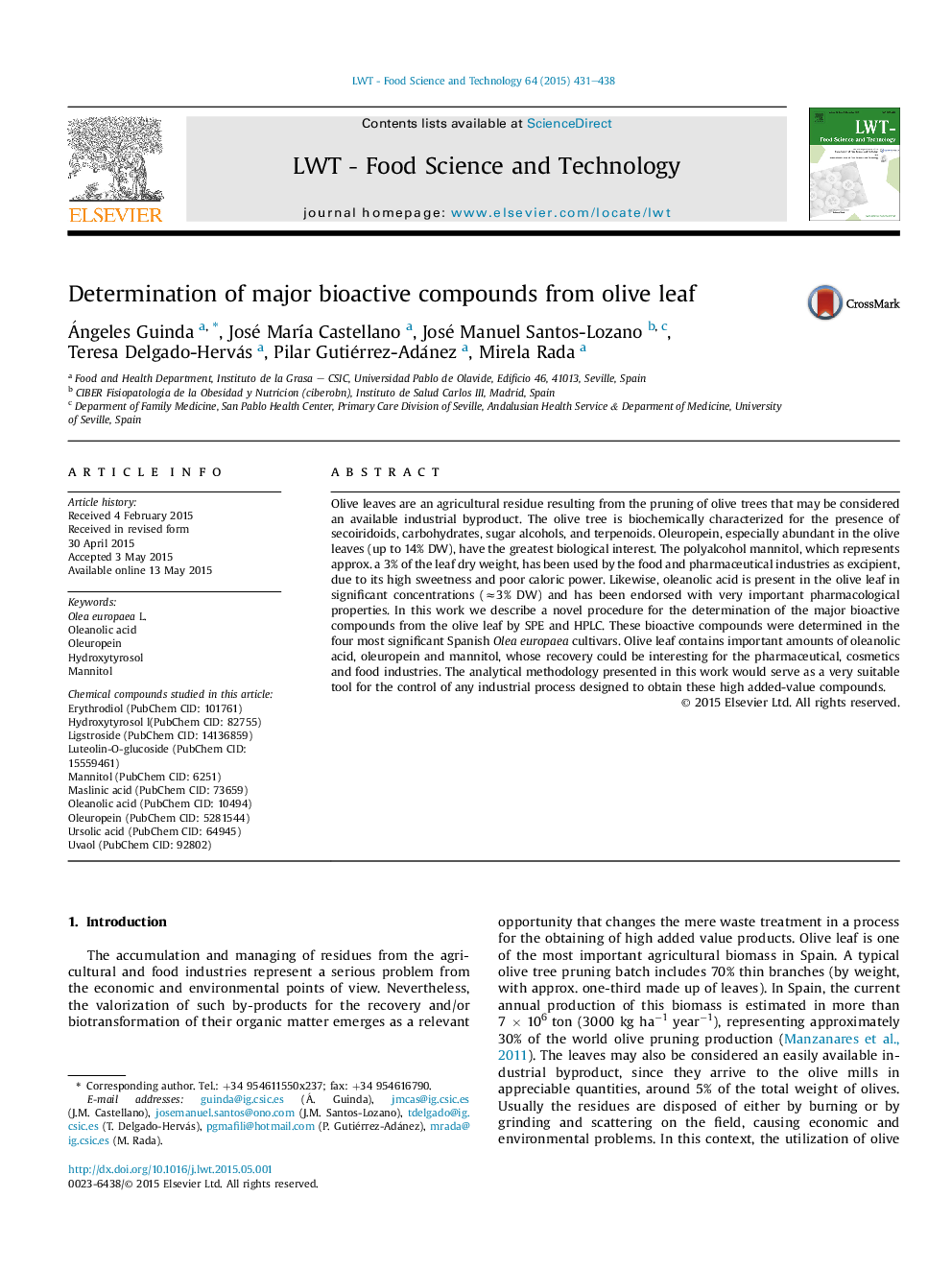| Article ID | Journal | Published Year | Pages | File Type |
|---|---|---|---|---|
| 6400818 | LWT - Food Science and Technology | 2015 | 8 Pages |
•Olive leaf is an agricultural residue with high potential in obtaining bio-compounds.•We established a method for determination of the major bio-compounds in olive leaf.•Olive leaves contain important amounts of oleanolic acid, oleuropein and mannitol.•The major bio-compounds of olive leaf were determined in four Spanish cultivars.•This method would be a suitable tool in the bio-compounds industrial obtaining.
Olive leaves are an agricultural residue resulting from the pruning of olive trees that may be considered an available industrial byproduct. The olive tree is biochemically characterized for the presence of secoiridoids, carbohydrates, sugar alcohols, and terpenoids. Oleuropein, especially abundant in the olive leaves (up to 14% DW), have the greatest biological interest. The polyalcohol mannitol, which represents approx. a 3% of the leaf dry weight, has been used by the food and pharmaceutical industries as excipient, due to its high sweetness and poor caloric power. Likewise, oleanolic acid is present in the olive leaf in significant concentrations (≈3% DW) and has been endorsed with very important pharmacological properties. In this work we describe a novel procedure for the determination of the major bioactive compounds from the olive leaf by SPE and HPLC. These bioactive compounds were determined in the four most significant Spanish Olea europaea cultivars. Olive leaf contains important amounts of oleanolic acid, oleuropein and mannitol, whose recovery could be interesting for the pharmaceutical, cosmetics and food industries. The analytical methodology presented in this work would serve as a very suitable tool for the control of any industrial process designed to obtain these high added-value compounds.
